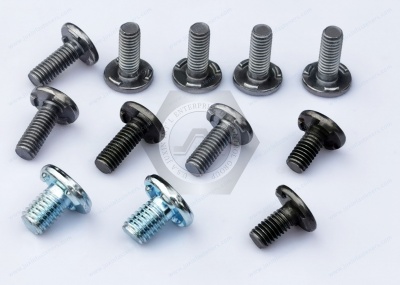Call Us
+86 136 6007 9809
Call Us
+86 136 6007 9809
May. 31, 2024
Introduction to Stud Welding
Stud welding is a method in which an arc is generated between the end of a metal or similar metal part and the surface of another metal workpiece. Once the joint surfaces melt, pressure is quickly applied to complete the weld. This technique originated in 1918 and gained worldwide attention due to its advantages of speed, reliability, simplified processes, and cost reduction.


Applications of Stud Welding
Today, stud welding is widely used in bridge construction, highways, building construction, shipbuilding, automotive, power plants, and electrical control cabinets. Materials that can be welded include low-carbon steel, stainless steel, low-alloy steel, copper, aluminum, and their alloys for studs, welding pins, and shear connectors.
Classification of Stud Welders
Stud welders are divided into two main categories: arc stud welders and capacitor discharge stud welders. Arc stud welders use an arc welding rectifier as the power source, while capacitor discharge stud welders use stored energy from capacitors for instant discharge welding.
Features of Arc Stud Welders
Arc stud welders include a welding power source, controller, welding gun, ground clamp, and welding cables. Advanced models use microprocessors for precise settings and real-time welding current and time control. Inverter-based arc welding rectifiers are preferred due to their small size, lightweight, and excellent dynamic characteristics.
Requirements for DC Welding Power Sources
DC power sources for stud welding should have a drooping static characteristic to maintain arc stability and ensure weld quality. They should also have an arc starting current and a high open-circuit voltage to guarantee a 100% success rate in arc starting and meet the demands of larger stud diameters.
Increasing Welding Current Rise Speed
For stud welding, where instantaneous high current is critical, the welding power source should reach its peak current within 32ms after connection. Although H-class insulation offers advantages in size and weight reduction, it also increases the resistance of the wires, which is a drawback for high-current welding.
Power Supply Cabinet Capacity Requirements
Stud welders have a low-duty cycle but require high instantaneous power. To ensure welding quality, the power supply cabinet should have sufficient capacity. Setting up a dedicated power line or staggering peak electricity usage are effective solutions.
Statistical Data
According to reports, the annual welding volume of cylindrical head studs in Japan is 60 million, and the yearly welding volume of special-shaped rod studs is 3 million. For high-quality stainless steel welding studs fasteners and professional technical support, don't hesitate to contact us at adelajonly@gmail.com or visit our website at [Juxin Fasteners]https://www.juxinfasteners.com.
Contact Us
Tel.:
+86 020 8621 0320
+86 020 3121 6067
Technical Support:
Navigation
SEND INQUIREY